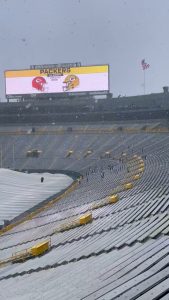How many times have you cribbed about the India Meteorological Department’s (IMD) faulty predictions, especially during the monsoon? The weather department’s forecast of Mumbai witnessing ‘moderate to intense spells of rain’ on the night of July 11 failed when the city woke up to a dry Monday morning.
While there are many different reasons behind these faulty predictions, one key point is the working of the Doppler radar.
Also read: List of floods that affected India in last year
What is a Doppler radar?
A Doppler radar, also known as a weather surveillance radar (WSR) or Weather radar, is a type of radar used to locate precipitation – rain, snow, hail, etc -, calculate its motion and estimate its type. Doppler radars are capable of detecting the motion of rain droplets in addition to the intensity of the precipitation. This data, when analyzed, can determine the structure of storms and their potential to cause severe weather.
Also read: What caused flooding in Germany?
Why is a Doppler radar so important?
A day before Cyclone Tauktae brushed past Mumbai’s coastline, May 17, the city’s only Doppler radar broke. Gauging the intensity of the storm in real-time became tougher with a defunct radar.
“It is an old machine and is under maintenance. The radar is not working owing to technical problems. Engineers are looking into it. It should be noted that there is no impact on the forecast because of this… we have high-resolution satellite images,” Dr Jayanta Sarkar, head, Regional Meteorological Centre, Mumbai said, as per Indian Express reports.
Also read: All about the high-speed solar winds that create geomagnetic storms
After two months of repair, the Doppler radar started working again. However, on Wednesday afternoon, when the city witnessed heavy rainfall, IMD’s only Doppler radar in Mumbai had stopped. By 8:30 PM, it started functioning partially, Indian Express reported.
How does a Doppler radar work?
A Doppler radar emits beams of energy, radio waves, from its antenna. When the beam strikes an object in the atmosphere, in this case, a raindrop, some energy scatters and some is reflected back at the radar. The larger the object, raindrop, the greater is the amount of energy that the radar receives in return.
Also read: Explained: Heat dome and how it caused intense heatwaves in US, Canada
Considering the time required for the beam to be transmitted and returned to the radar, helps the Doppler radar determine and measure the raindrops’ distance.






